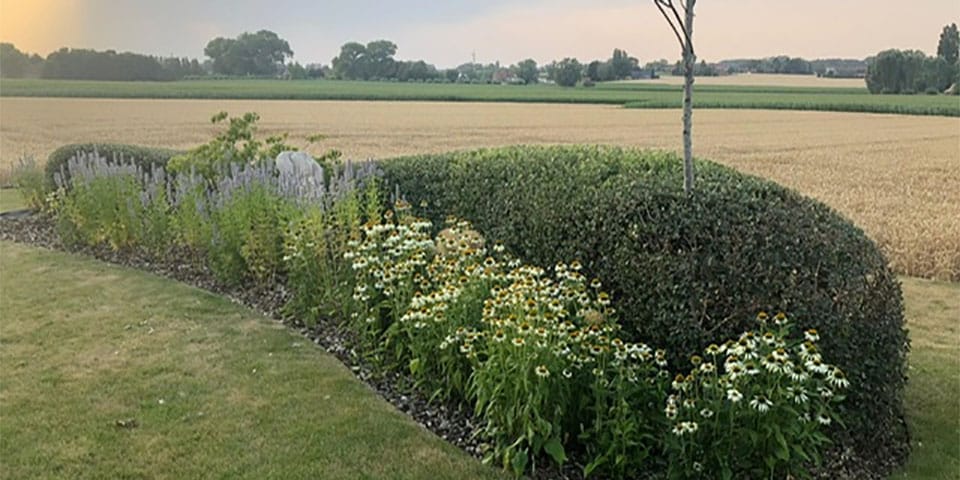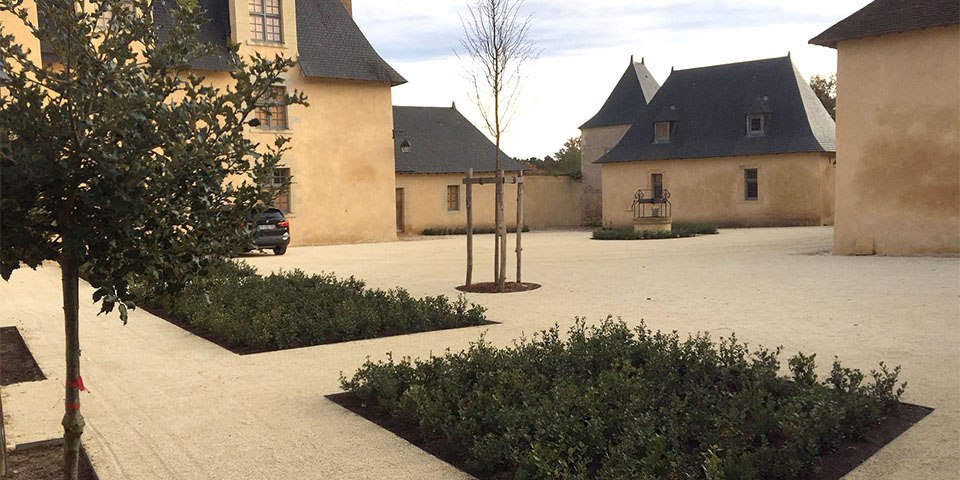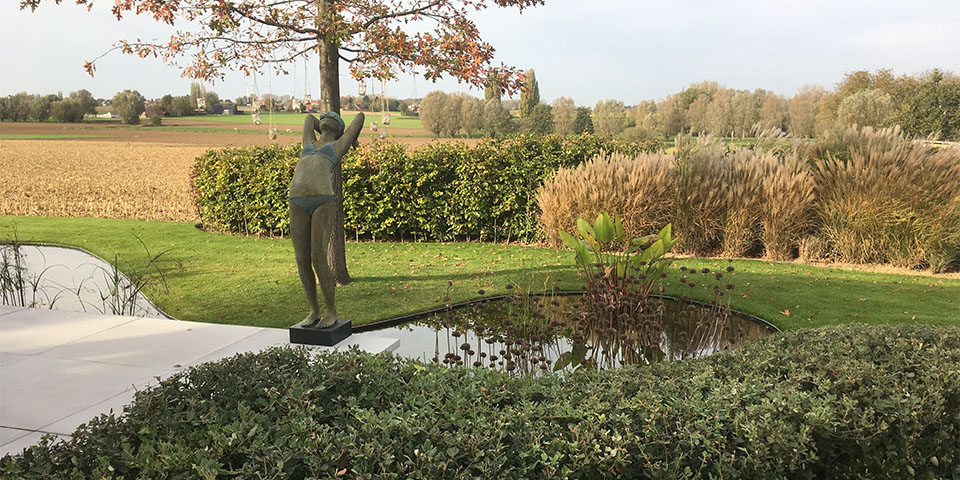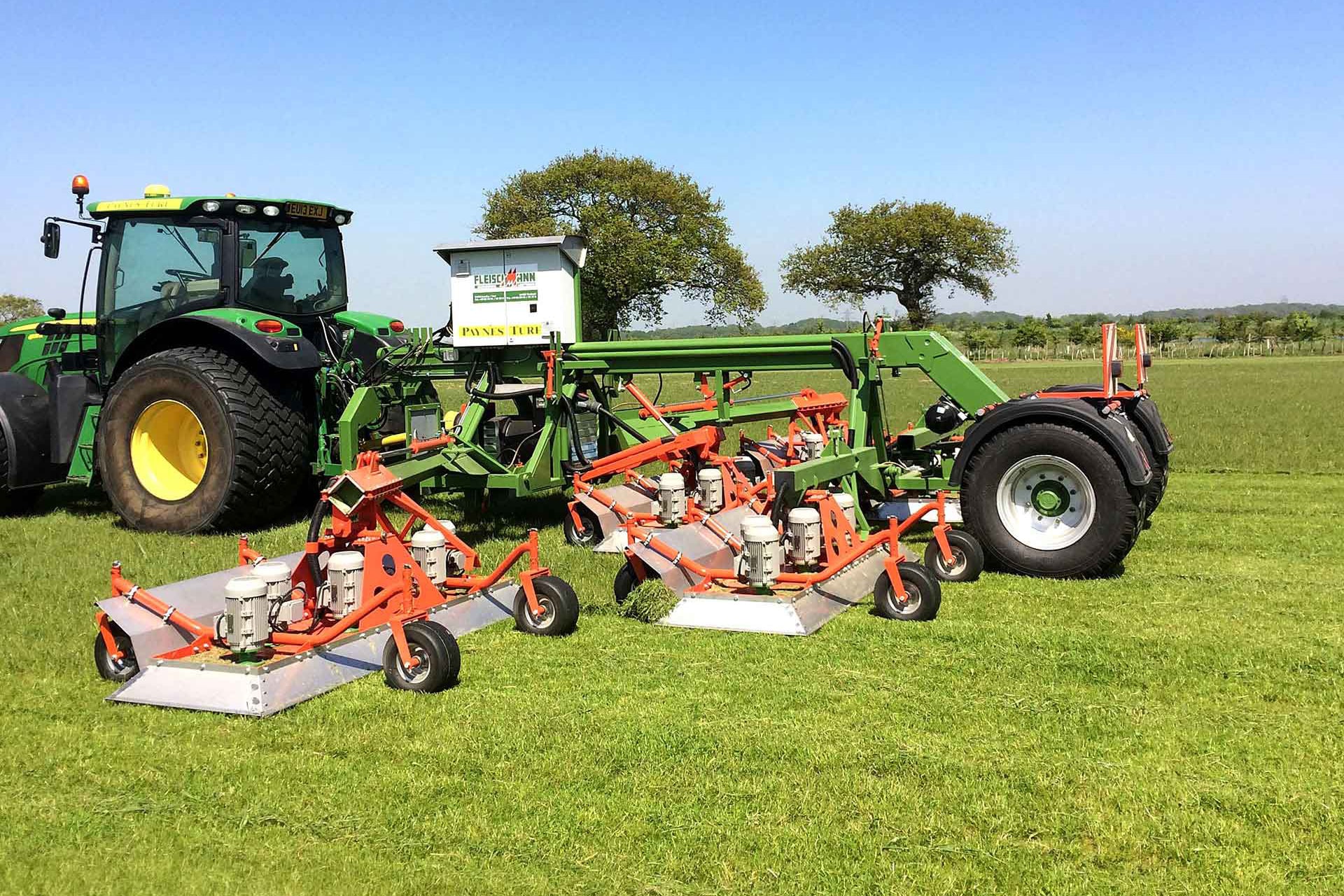
Clouds and massifs in holm oak or kermes oak
Decorative and hardy: eye-catcher in garden and park
Sturdy yet elegant, hardy clouds and massifs have long won their place in modern garden and park design. To ensure that they continue to fulfill their decorative role endlessly and with verve, Hugo Maes in Waregem carefully cultivates holm and kermes oaks with small, fresh leaves.

To plant massifs, plant 5 to 7 plants per m2.
The holm oak or Quercus ilex, like little brother Quercus coccifera (kermes oak), grows mainly in southern Europe and North Africa. It is one of the most common woody plants there, perfectly harmonized with the calcareous soils and mild temperatures, and characterized by its full foliage of leathery, smooth or holly, toothed leaves with felt-gray to silvery undersides. Depending on the growing site, the leaves grow to about 3 to 8 cm in size in this natural habitat, although Hugo Maes has an explicit preference for the southern French plants with the smallest leaves. Every year he meticulously selects the best acorns in the garrigue, which he then germinates and further cultivates in Waregem.

Quercus ilex also lends itself to the creation of clean planes and lines in a modern garden design.
Compact and full
The choice of acorns of French origin, combined with the regular pruning and extensive care they receive during further cultivation in Belgium, creates compact, bushy and beautifully branched plants with small and evergreen leaves. With five to seven plants per m2, you thus create a completely dense and durable massif, never having to worry about any gaps in your perfectly sculpted ornamental hedge thanks to the full and sturdy foliage.
If the holm oak exceptionally loses some leaves under the influence of prolonged and extreme cold or drought, it does not have to wait for new growth. Young, fresh leaves appear almost immediately at the point of loss.

Because the holm oak is rather slow-growing, massifs stay in perfect shape for a long time.
Good for any cut
For the same reasons, Quercus ilex also lends itself perfectly to a wide variety of pruning shapes. Wavy massifs along a walkway or a natural pond, decorative clouds as variety in an otherwise flat lawn, or clean lines and planes to delineate garden rooms in a modern design...: the possibilities are endless.
Because the holm oak is rather slow-growing, the massifs also stay in perfect shape for a long time. Two pruning sessions a year - one in late spring and one in early autumn - are sufficient to maintain even the tightest contours. If a looser pruning form is chosen, one pruning will be enough.
Ironclad
The maintenance of massifs made of holm oak is easy in other respects as well. Indeed, unlike other hardy species classically used for such plantings, Quercus ilex is not susceptible to diseases, pests and infestations. Because of its southern origin, it is quite resistant to sun, drought, wind and even salts, while Hugo Maes, with his local and caring cultivation, managed to adapt the plant perfectly to our own winters and soil conditions. Besides one or two prunings, an annual liming is therefore sufficient.
Nevertheless, planting massifs does require some extra attention, especially during dry, hot summers. In order for the plant to root well, it is essential that it receives sufficient water. If there is insufficient rainfall, it will be necessary to water manually. Once rooted, watering is no longer necessary, even in extreme weather conditions.

Because of its southern origin, Quercus ilex is highly resistant to sun, drought and wind.
Also for small gardens
In principle, clouds and massifs up to about three meters high can be realized with Quercus ilex, although in practice lower clouds and planes are usually chosen.
Moreover, especially in smaller gardens, there is a demand to work with massifs in miniature. Quercus coccifera or kermes oak lends itself particularly well to this. These plants do not grow taller than one and a half meters, are even slower and more compact than the holm oak, and are so drought-resistant that they can also be planted in pebbles, for example.
As an added bonus, the hard, spiny leaves of this miniature version turn a warm, soft bronze in spring. This provides an unexpected spectacle in the garden throughout the year.



